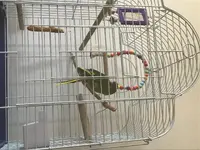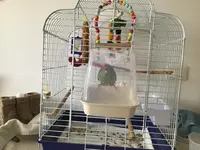Noodles
New member
Please help me. Thinking I was doing a good deed I adopted a 1.5 year old male Kakariki from a family having to leave country, when he arrived the family told me he had never bitten any of them and two of the children demonstrated this by putting hands in his cage. The owners said he had been bought for their son who after a few months lost interest in him, they had other pets so wasn’t let out of his cage much. The following day I went out and bought a larger cage for him. From day One he has been let out now twice a day for a few hours in the morning and again late afternoon. I will admit that I had no experience with birds & have probably made quite a few errors along the way, the main one I think is letting him out straight away without giving him time to get used to new surroundings and voices. He has seemly turned from not being aggressive to a bird that bites all the time. The minute you move in the room he lunges inside his cage at you, I can let him out now without being bitten as I praise and reward him for moving away from door. He will chatter and fly around the room, even land on me and lick an arm or leg - then for no reason take a chunk. Just want the best for him as he is a wonderful bird and I could spend hours just watching him. When he bites I do make a fist and gently push him away, but then he usually just jumps on my fist and then bites an arm. Every time I think I am making progress and go 2 days without any biting he turns into Hannibal Lector again. I have had him a month now and need advice on how to proceed. Kind of a ABC guide for the inexperienced.
Attachments
Last edited:


